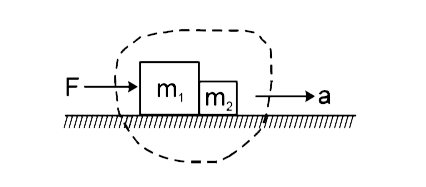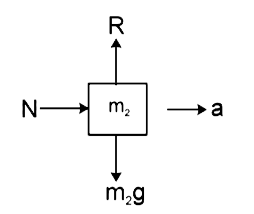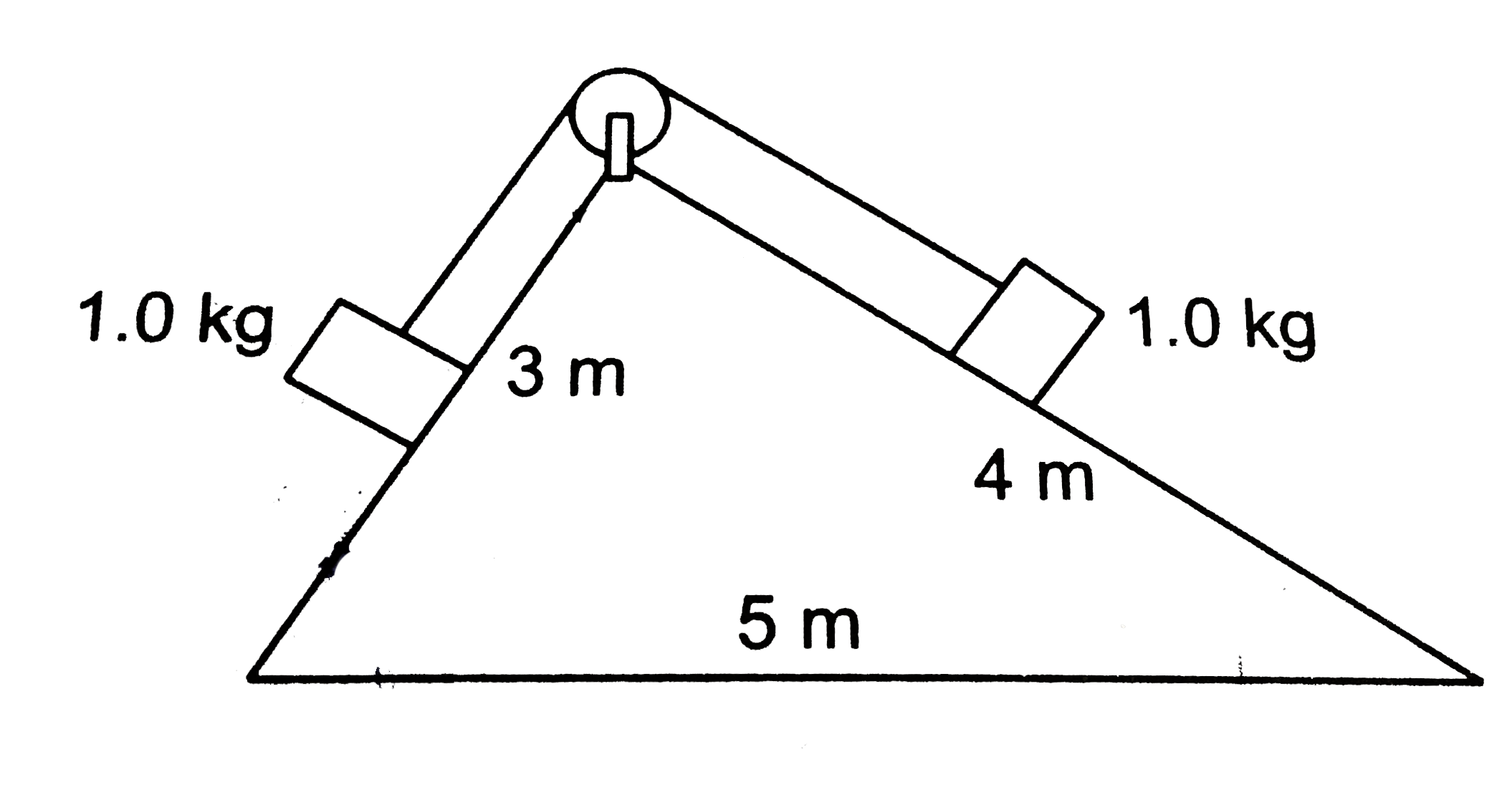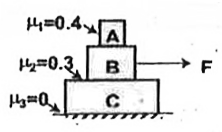A force F is applied horizontally on mass m1 as shown in figure. Find the contact force between m1 and m2

Considering both blocks as a system to find the common acceleration. Common acceleration
a=F(m1+m2) . . . . (1)

Fig. 1.18
To find the contact force between 'A' and 'B' we draw F.B.D. of mass m2.
F.B.D. of mass m2
ΣFx=max
N=m2.a
N=m2F(m1+m2)

Topper's Solved these Questions
- NEWTON'S LAWS OF MOTION & FRICTION BOOK - MOTIONCHAPTER - NEWTON'S LAWS OF MOTION & FRICTION EXERCISE - Problem
26 Videos
- NEWTON'S LAWS OF MOTION & FRICTION BOOK - MOTIONCHAPTER - NEWTON'S LAWS OF MOTION & FRICTION EXERCISE - Questions For Practice
25 Videos
- MODERN PHYSICS -1BOOK - MOTIONCHAPTER - MODERN PHYSICS -1EXERCISE - EXERCISE-4 ( LEVEL- II)
39 Videos
- NLM & FRICTIONBOOK - MOTIONCHAPTER - NLM & FRICTIONEXERCISE - EXERCISE-4 ( LEVEL-II)
15 Videos
Similar Questions
Two blocks of masses '3m' and '2m' are in contact on a smooth table. A force P is first applied horizontally on block of mass '3m' and then on mass '2m'. The contact forces between the two blocks in the two cases are in the ratio?
View SolutionTwo blocks A and B of masses m and M are attached with ideal string and pulley, and placed on smooth horizontal surface. Force F is applied horizontally as shown in figure. Find the ratio of the acceleration of A to that of B.

View Solution
Knowledge Check
Three blocks are placed at rest on a smooth inclined plane with force acting on m1 parallel to the inclined plane. Find the contact force between m2 and m3
 A(m1+m2+m3)Fm3Bm3Fm1+m2+m3CF−(m1+m2)gDF
A(m1+m2+m3)Fm3Bm3Fm1+m2+m3CF−(m1+m2)gDFTwo blocks of masses m1 and m2 are placed in contact with each other on a horizontal platform as shown in figure The coefficent of friction between m1 and platform is 2μ and that between block m2 and platform is μ.The platform moves with an acceleration a . The normal reation between the blocks is
 Azero in all casesBzero only if m1=m2Cnon zero only if a>2μgDnon zero only if a>μg
Azero in all casesBzero only if m1=m2Cnon zero only if a>2μgDnon zero only if a>μg
A constant force F=m_2g/sisappliedontheblockofmassm_1asshown∈figure.Thestr∈gandthep≤––––yarelightandthesurfaceofthetab≤issm∞th.F∈dtheae≤rationofm_1

View SolutionA constant force F=m2g/2 is applied on the block of mass m1 as shown in fig. The string and the pulley are light and the surface of the table is smooth. The acceleration of m1 is :

View SolutionThe arrangement shown in the figure, the systme of masses m1,m2 and m3 is being pushed by a force F applied on m1 horizontally. In order to prevent the downwards slipping of m2 between m1 and m3 if coefficient of friction between m2 and m3 is μ and all the other surface are smooth, the minimum value of F :

View SolutionIn the arrangement shown in the figure mass mA=2kg,mB=4kgandmC=6kg. Co-efficient of static friction between A and B (μ1)=0.4, between B and C (μ2)=0.3 and between C and ground (μ3)=0. A constant force F = 32 N is applied horizontally on block B. Find friction force developed between A and B and that between B and C.

View SolutionA block of mass 1 kg start moving at t = 0 with speed 2m/s on rough horizontal surface with coefficient of friction 0.2. A horizontal force F is applied in the direction of velocity which varies with time as shown in figure. Find the speed (in m/s) of particle at t = 3 s.

View SolutionA body of mass m is kept on a rough horizontal surface of friction coefficient m . A force P is applied horizontally , but the body is not moving .Find the net force F excerted by the surface on the body .
View Solution
